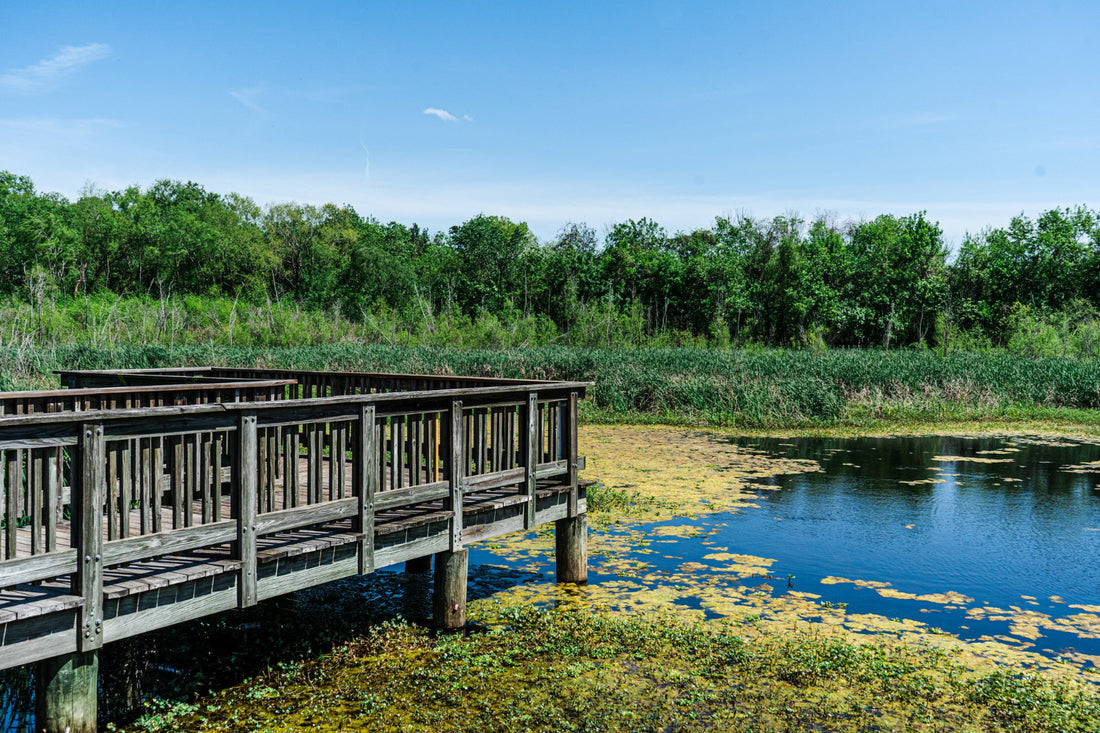When it comes to maintaining a beautiful lake, understanding the challenges you face with muck and weed growth is the first step towards achieving clarity and health in your waterscape. If you're finding yourself constantly battling against unsightly aquatic weeds and muck, it's crucial to implement effective strategies to manage and prevent these issues. As providers of lake and river lawn irrigation systems, we have the insight and tools to help you maintain a pristine waterfront.
Handling lake muck and weeds can feel overwhelming, but with the right techniques, it's a manageable task. Our approach combines mechanical removal methods with natural preventative solutions, ensuring that the beauty and ecological balance of your lake isn't just preserved but enhanced. By understanding how these challenges form and the best practices to combat them, you can enjoy a clear and healthy lake throughout the year. Whether you're looking to install a new system or optimize an existing one, we're here to offer guidance and support tailored to the unique needs of your lakeshore property.
Understanding Muck and Weed Growth in Lakes
The presence of muck and weeds in lakes can significantly impact water quality and the aesthetic appeal of lakeshore properties. Muck, primarily composed of decaying plant material, fish waste, and other organic substances, naturally accumulates over time. This buildup not only detracts from the waterfront's beauty but can also create a breeding ground for pests and produce unpleasant odors. Similarly, excessive weed growth in lakes can obstruct waterways, hinder recreational activities like swimming and boating, and disrupt the natural ecosystem.
The growth of weeds is often propelled by nutrients such as nitrogen and phosphorus, which can be plentiful in stagnant water bodies due to runoff from nearby land. Without proper management, these elements fuel the growth of aquatic plants and algae at an accelerated rate. Understanding the origins and effects of muck and weed proliferation helps us develop more effective strategies for managing these common issues in lakeside environments.
Top Mechanical Tools for Muck and Weed Removal
When tackling the issue of muck and excessive weed growth, employing the right tools can make a significant difference. Here’s a look at some top mechanical tools that are effective in maintaining a clean and healthy lake environment:
- Weed Cutters: Floating or submerged, these tools are great for slicing through dense weed mats, making it easier to remove large areas of vegetation.
- Dredgers: Used for muck removal, dredgers can scoop out bottom sediments and decaying organic matter directly from the lake bed.
- Aquatic Weed Rakes: These rakes are specially designed with long tines to pull out weeds from their roots, ensuring thorough removal.
- Harvesters: Ideal for larger areas, aquatic weed harvesters cut and collect weeds mechanically, which is efficient for managing extensive weed problems.
Regular use of these tools not only helps in maintaining the aesthetic value of the lake but also improves water quality. Managing the process involves routine monitoring and removal operations to keep the ecosystem balanced and flourishing. By equipping ourselves with the right mechanical tools, we ensure that our lakeside property is not only beautiful but also sustainable and enjoyable for everyone.
Natural Methods to Control and Prevent Lake Weeds
In addition to mechanical tools, there are natural methods that can effectively control and prevent the growth of weeds in lakes. One such method is the use of biological control agents. For example, we sometimes introduce certain types of fish, like grass carp, that feed on aquatic weeds. These biological agents can help manage weed growth naturally without harming the aquatic environment. Another approach is planting beneficial aquatic plants that compete with weeds for nutrients, thus naturally limiting weed growth.
Moreover, optimizing water circulation can significantly reduce weed growth. Proper circulation disrupts the stagnant water conditions that favor weed proliferation. By strategically placing aeration devices, we enhance oxygen levels throughout the water body. This not only improves water quality but also promotes a healthier aquatic environment that naturally resists excessive weed growth.
Maintaining a Clear Lake with Regular Upkeep Techniques
Consistent maintenance is key to keeping lake waters clear and free of unwanted muck and weeds. Regular monitoring and timely interventions help us manage aquatic plant growth effectively. Routine inspections allow us to identify potential problem areas early and address them before they escalate. Implementing seasonal cleaning schedules, especially during early spring or late fall when plant growth is minimal, can prevent excessive buildup throughout the year.
Additionally, adjusting nutrient levels in the water can deter unwanted plant growth. Use of phosphorus-free fertilizers on surrounding landscapes minimizes the nutrient runoff into the lake. This simple change in landscaping practices significantly impacts the health of the lake by reducing one of the primary nutrients that feed weed and algae growth.
Conclusion
Keeping our lakes beautiful and functional requires a thoughtful approach that combines the use of advanced tools, natural methods, and regular upkeep. We, at BeachGroomer, are committed to providing the most effective solutions for maintaining clean and healthy lake environments. Our extensive experience and specialized equipment allow us to tackle any challenges related to lake weed and muck removal efficiently.
If you are looking to enhance the beauty and usability of your lakeshore property, explore our wide range of products and services designed for optimal water management. Together, we can achieve a pristine waterfront that enhances your property value and enriches your outdoor experience. Discover how we can help you maintain a spectacular lakeshore property. Learn more about our water pumps for lakes.

